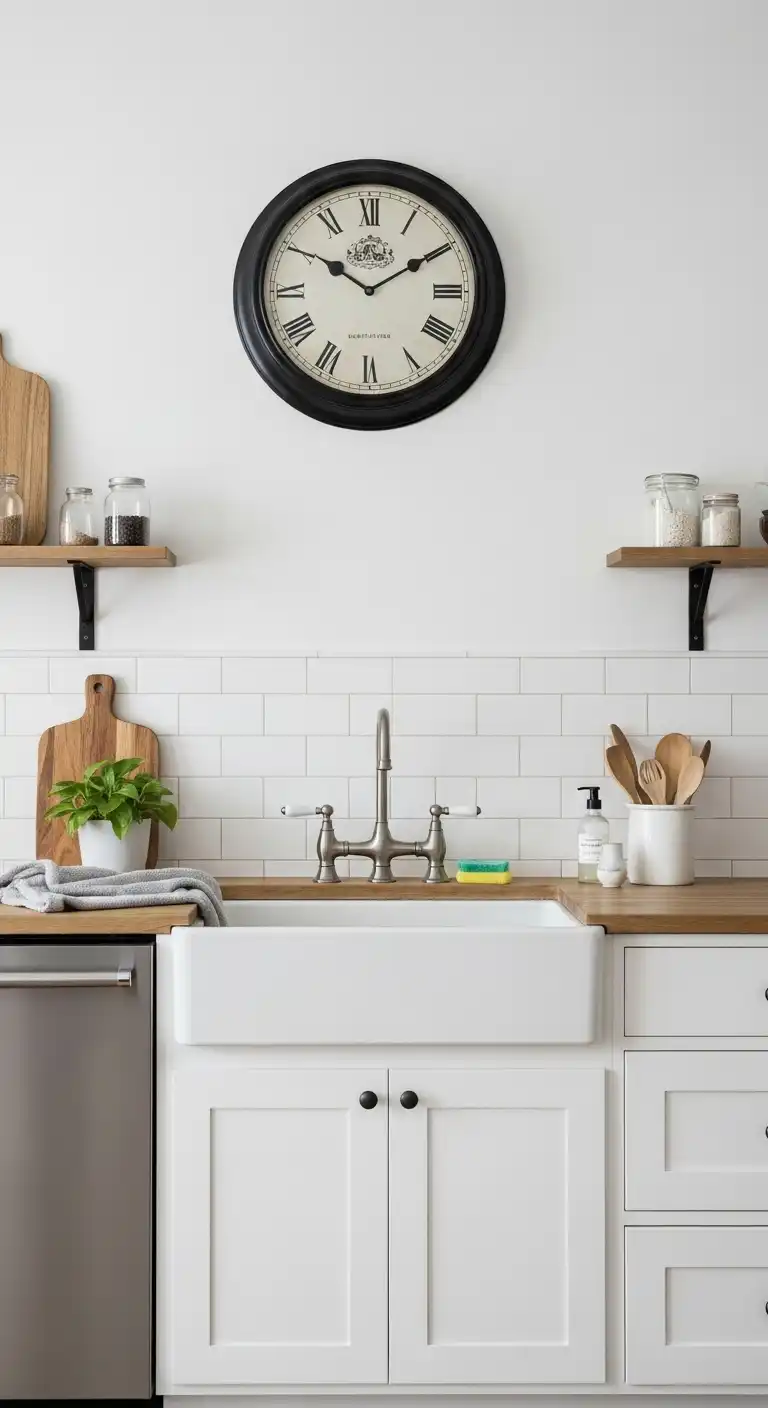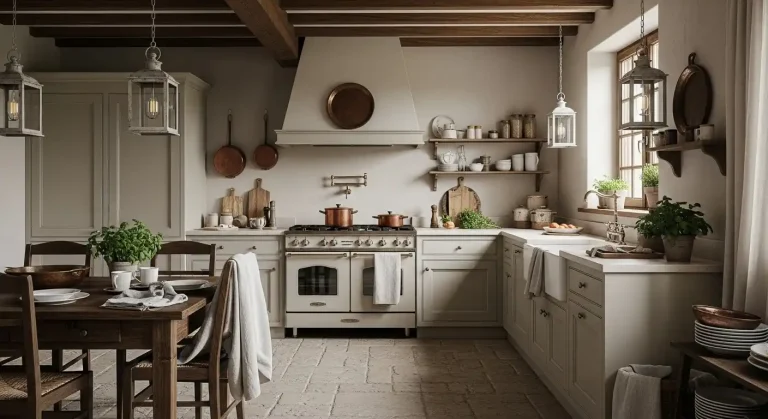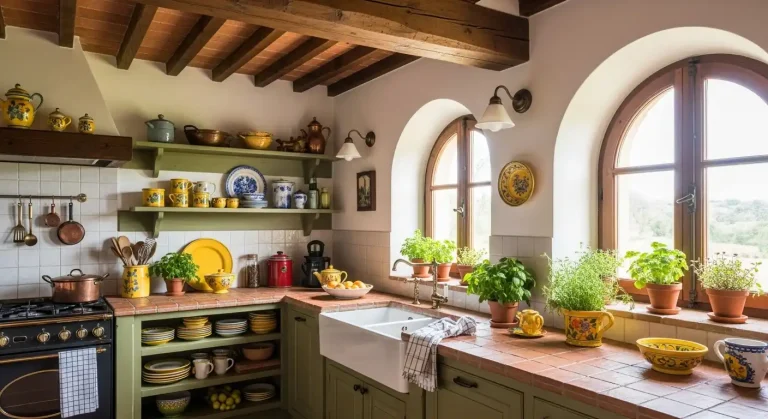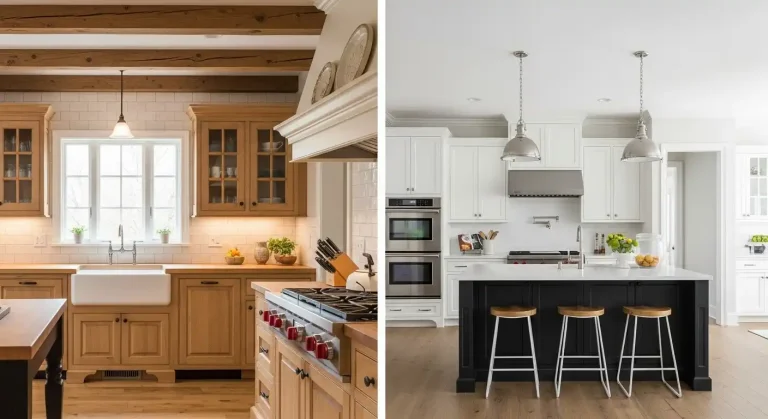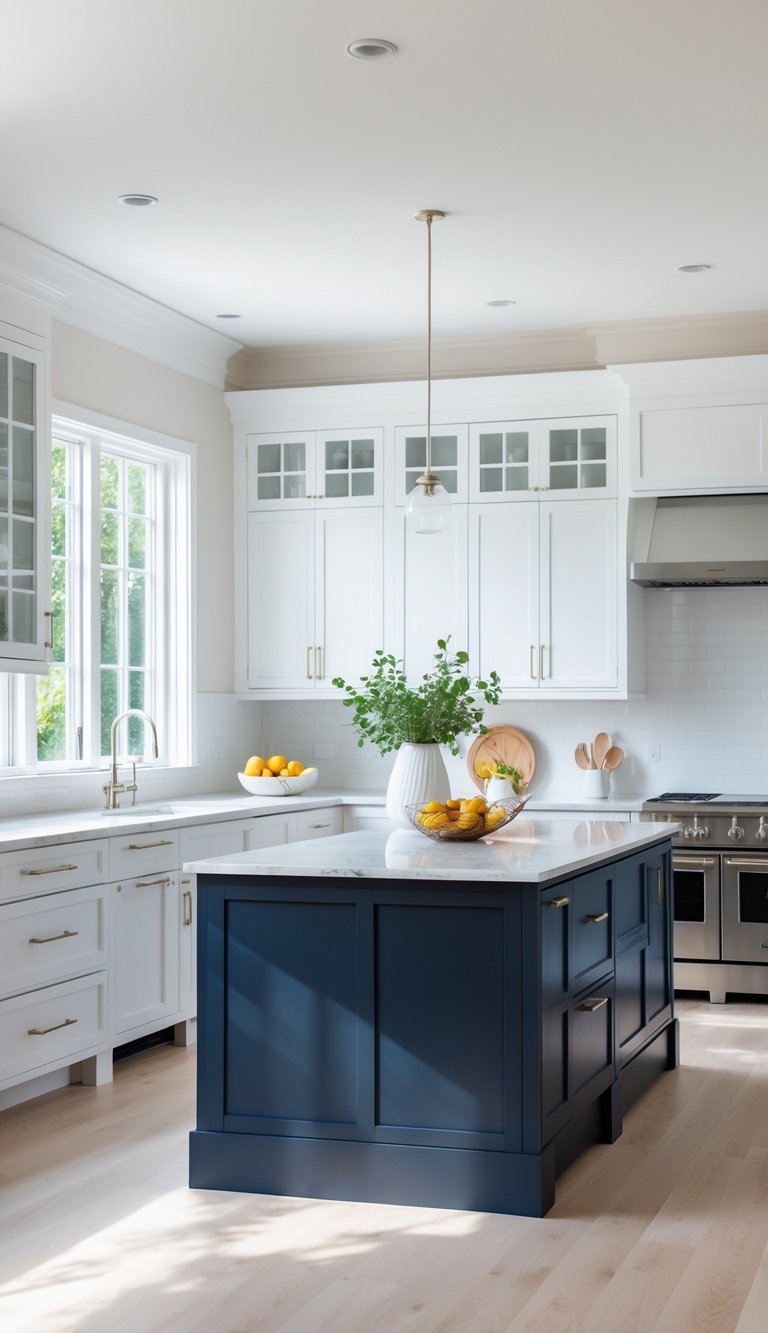The Ultimate Guide to Mixing Kitchen Counter Materials
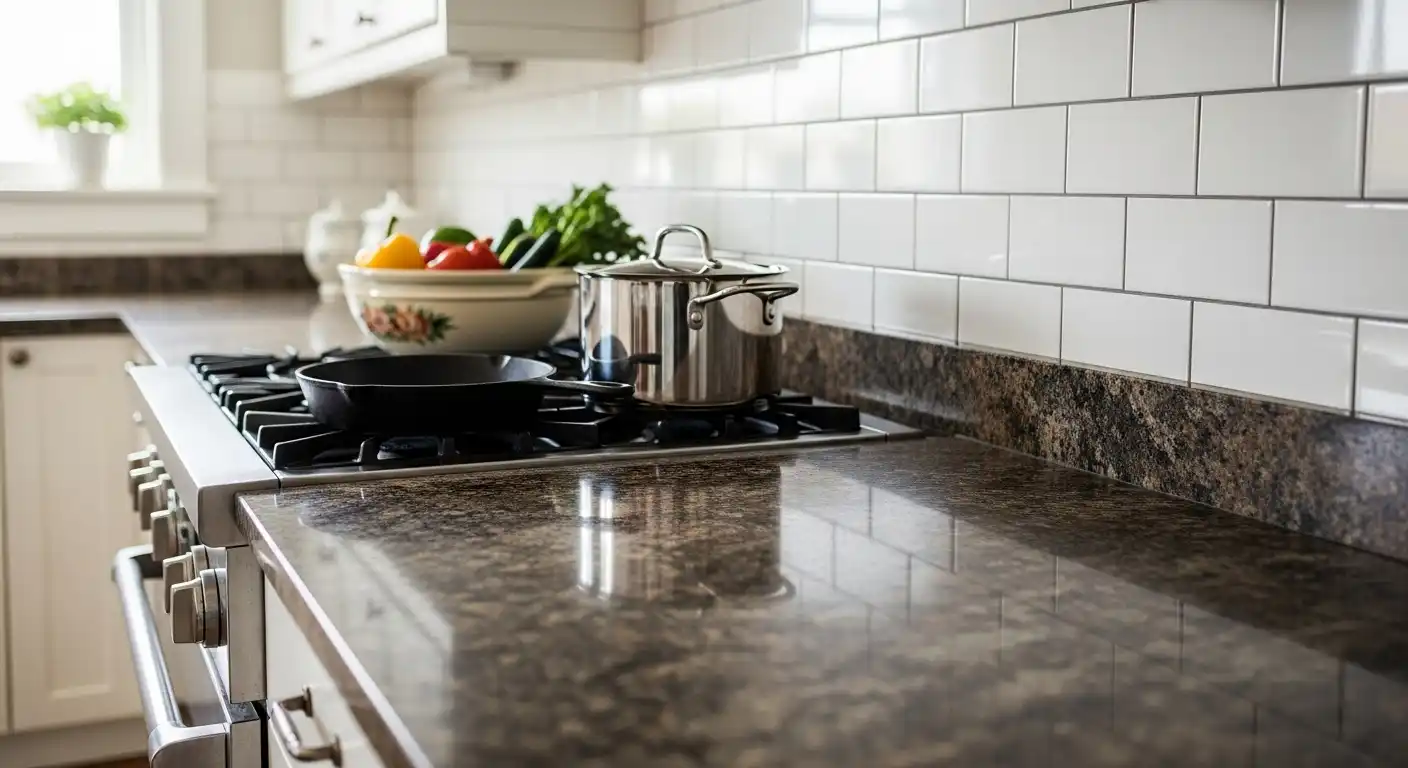
When designing or remodeling a kitchen, countertops play a crucial role in both aesthetics and functionality.
Traditionally, kitchens featured a single countertop material throughout the space, but modern design trends have embraced the idea of mixing materials to create visual interest, define zones, and optimize performance.
If you’re wondering how to combine different surfaces seamlessly, this guide to mixing kitchen counter materials will provide you with everything you need to know to get it right.
Mixing countertop materials offers a unique opportunity to balance durability, style, and practicality.
Whether you want the warmth of wood paired with the sleekness of quartz or the natural beauty of granite combined with the industrial vibe of concrete, thoughtful combinations can elevate your kitchen design to the next level.
Why Mix Kitchen Counter Materials?
There are several compelling reasons to mix kitchen countertop materials, including:
- Functionality: Different materials excel in different areas. For example, you might want a heat-resistant surface near the stove and a softer, more forgiving surface for prep areas.
- Visual interest: Mixing materials adds texture, color contrast, and depth to your kitchen, making it more dynamic and personalized.
- Zoning: Different countertop materials can help define specific areas, such as a breakfast bar, prep zone, or baking station.
- Budget management: Using a high-end material only where it’s most needed and pairing it with a more affordable option elsewhere can help control costs.
Popular Kitchen Counter Materials to Consider
Before diving into mixing, it’s important to understand the characteristics of common countertop materials:
- Quartz: Engineered stone that is non-porous, durable, and available in many colors and patterns.
- Granite: Natural stone with unique veining and excellent heat resistance.
- Marble: Luxurious and elegant but softer and more prone to staining.
- Wood/Butcher Block: Warm and inviting, perfect for prep areas but requires regular maintenance.
- Concrete: Industrial and customizable with stains or textures, but can be prone to cracking.
- Laminate: Budget-friendly and available in many designs, though less durable.
- Stainless Steel: Sleek, modern, and highly durable, often used in professional-style kitchens.
How to Mix Kitchen Counter Materials Successfully
1. Balance Aesthetic and Function
When mixing materials, it’s vital to consider both how the surfaces look together and how they will be used.
For example, pairing a heat-resistant granite countertop near the stove with a warm butcher block island can combine practicality with style.
The granite protects against hot pots and pans, while the wood island offers a comfortable spot for chopping and casual dining.
2. Choose Complementary Colors and Textures
Your countertop materials should complement each other in color and texture.
For example, pairing a smooth, polished quartz with a rougher, matte concrete can create an appealing contrast.
Alternatively, you might opt for materials within the same color family but different finishes to keep the look cohesive.
3. Define Zones with Materials
Use different materials to clearly define kitchen zones. For example, a durable quartz surface for the main prep area and a softer wood countertop for the breakfast bar can visually separate these spaces while serving different functions.
4. Consider Edge Treatments
When mixing materials, pay attention to the edges where two surfaces meet. Seamless transitions or creative edge profiles can enhance the overall look.
Some homeowners choose to highlight the junction with metal trim or contrasting seams for a modern touch.
Popular Combinations in Mixing Kitchen Counter Materials
Quartz and Wood
One of the most popular combinations is quartz paired with wood. Quartz offers durability, stain resistance, and a wide range of colors, making it ideal for heavy-use areas.
Wood, on the other hand, adds warmth and a natural feel, perfect for islands or breakfast bars.
This combo balances the sleek, modern look of quartz with the organic charm of wood, creating a welcoming and functional kitchen.
Granite and Concrete
Granite’s natural elegance pairs beautifully with the industrial edge of concrete. Granite can be used on main countertops for durability and heat resistance, while concrete can serve as a unique island surface with customizable colors and textures.
This pairing works well in contemporary or rustic kitchens and allows you to play with contrasting finishes—polished granite against matte concrete.
Marble and Stainless Steel
For a high-end, professional kitchen look, mixing marble with stainless steel countertops is a striking option. Marble’s luxurious veining contrasts with the sleek, reflective surface of stainless steel, which is also incredibly hygienic and easy to clean.
This combination is ideal for chefs who want both style and functionality.
Laminate and Quartz
If you want to manage your budget without compromising style, mixing laminate with quartz is a smart choice. Use quartz for high-traffic areas like the main countertops and laminate for secondary surfaces or breakfast nooks.
Laminate offers endless design possibilities, including wood and stone looks, so it can complement quartz nicely when chosen carefully.
Tips for Maintaining Mixed Countertop Materials
Each countertop material requires different care, so when mixing kitchen counter materials, keep these maintenance tips in mind:
- Quartz: Clean with mild soap and water; avoid abrasive cleaners.
- Wood: Oil regularly and avoid standing water to prevent warping.
- Granite: Seal periodically to protect against stains.
- Concrete: Seal to prevent staining and repair cracks promptly.
- Stainless Steel: Use a soft cloth and stainless steel cleaner to avoid scratches.
- Laminate: Avoid cutting directly on the surface and clean spills promptly.
Maintaining each material according to its needs will ensure your mixed kitchen counters stay beautiful and functional for years.
Design Inspiration: How to Mix Kitchen Counter Materials Like a Pro
- Create a two-tone effect: Use one material for base cabinets and another for the island or upper counters.
- Highlight architectural features: Use a contrasting material on a kitchen peninsula or bar area to draw attention.
- Play with shapes: Combine rectangular granite countertops with a curved wood island for visual interest.
- Use color to unify: Choose materials in complementary or matching color tones to tie the design together.
Final Thoughts
Mixing kitchen counter materials is an exciting way to personalize your kitchen while optimizing durability and style.
This guide to mixing kitchen counter materials shows that with careful planning and consideration, you can create a kitchen that is both beautiful and practical.
Whether you prefer the warmth of wood paired with the sleekness of quartz, the natural beauty of granite combined with concrete, or the high-end look of marble and stainless steel, mixing materials allows you to design a kitchen that fits your lifestyle and aesthetic perfectly.
Remember to balance function and form, consider maintenance, and use complementary colors and textures to achieve a cohesive and stunning result.
With the right approach, your mixed-material kitchen countertops will become a standout feature that elevates your entire home.

